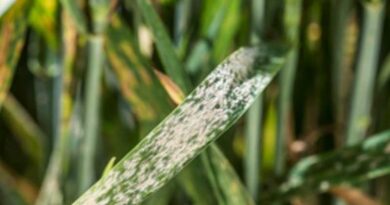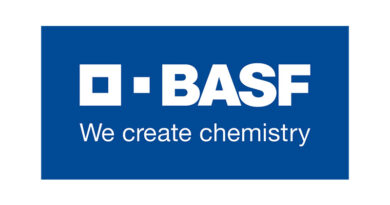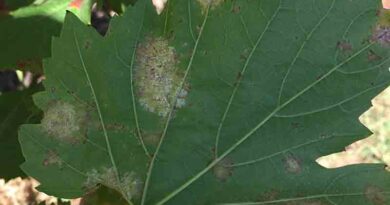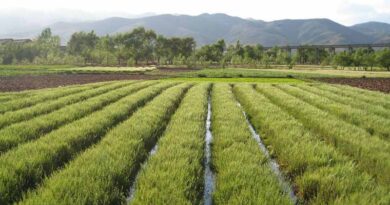Wheat powdery mildew pathogen now resistant to two fungicide groups
03 April 2023, AU: The Centre for Crop and Disease Management’s Dr Fran Lopez-Ruiz has told growers and advisers that the wheat powdery mildew pathogen is now resistant to two fungicide groups.
Key points
- The wheat powdery mildew pathogen has developed resistance to the quinone outside inhibitor (QoI, Group 11, strobilurins) fungicides and demethylation inhibitor (DMI, Group 3, triazole) fungicides
- Resistance to both fungicide groups is widespread in New South Wales, Victoria, Tasmania and South Australia
- Non-chemical disease management practices are key for managing fungicide resistance in wheat powdery mildew outbreaks, especially under conducive climatic conditions
Dr Lopez-Ruiz’s discussion of the implications for management was delivered at the 2023 GRDC Update held at Wagga Wagga, New South Wales, in mid-February, and at the 2022 Crop Protection Forum at Wagga Wagga, NSW, in late November.
“The wheat powdery mildew pathogen has developed resistance to the QoI (Group 11, strobilurins) fungicides and the DMI (Group 3, triazole) fungicides,” Dr Lopez-Ruiz said.
“Resistance to both groups has been found at high frequencies across the wheat growing areas of NSW, Victoria, Tasmania and South Australia.
“Double target-site mutations previously associated with fungicide resistance overseas were identified where we saw resistance to Group 11 and Group 3 fungicides at the same time.”
Implications for control
Dr Lopez-Ruiz, who leads the fungicide resistance group at Curtin University, said there were some implications for management.
“In areas where wheat powdery mildew resistance to DMI and QoI is present, the practice of using succinate dehydrogenase inhibitor (SDHI) fungicides to control other diseases could quickly lead to resistance in this mode of action as well,” he said.
He pointed to work by the Australian Fungicide Resistance Extension Network (AFREN), which has identified five actions to help avoid fungicide resistance:
- avoid susceptible crop varieties;
- rotate crops – use time and distance to reduce disease carryover;
- use non-chemical control methods to reduce disease pressure;
- spray only if necessary and apply strategically; and
- rotate and mix fungicides or mode of action groups.
GRDC grower relations manager Graeme Sandral noted that these strategies are generally more effective at delaying fungicide resistance if all growers within whole districts follow these actions.
Mix and rotate challenges
Unfortunately, Dr Lopez-Ruiz said, the presence of DMI and QoI-resistant wheat powdery mildew populations at high levels, together with the relatively lower activity of SDHIs against this disease and its higher associated risk for resistance development, meant rotation and mixing of fungicides from different groups was difficult.
“In this scenario, actions one to three (above) seem the logical approach, at least until disease levels drop and fungicides with higher activity against wheat powdery mildew become available,” he said.
“Recently, three new mildew-specific fungicides, metrafenone (Group U8), quinoxyfen (Group 13) and proquinazid (Group 13), have been approved under an emergency permit for the control of wheat powdery mildew. The high specificity of these active ingredients means that they will have a limited impact on other diseases.
“Growers and agronomists concerned about DMI or QoI lack of performance against wheat powdery mildew should contact the Centre for Crop and Disease Management Fungicide Resistance Group via frg@curtin.edu.au.
“Alternatively, contact a local plant pathologist or an AFREN expert to discuss the situation.”
Also Read: G20 India: 2nd ADM of the Agriculture Working Group held in Chandigarh
(For Latest Agriculture News & Updates, follow Krishak Jagat on Google News)















